
貴石・半貴石リスト:写真と意味
 宝石愛好家の方でも、ジュエリーをあまり好まない方でも、宝石の種類について議論する際に「貴石」と「半貴石」という言葉を耳にしたことがあるでしょう。貴石と半貴石の違いは、必ずしも高い価値や希少性を反映しているわけではないため、主に人工的に作り出されています。
宝石愛好家の方でも、ジュエリーをあまり好まない方でも、宝石の種類について議論する際に「貴石」と「半貴石」という言葉を耳にしたことがあるでしょう。貴石と半貴石の違いは、必ずしも高い価値や希少性を反映しているわけではないため、主に人工的に作り出されています。
では、半貴石と貴石って何でしょう?今日は、この違いの由来を紐解き、貴石と半貴石を全てリストアップして、その疑問にお答えします!この記事を最後まで読めば、貴石や半貴石を賢く、自信を持って購入できるようになるはずです。

貴石と半貴石の違いは何ですか?
貴石と半貴石の間に科学的な違いはありません。多くの場合、「貴石」は「半貴石」よりも価値が高いわけではありません。しかし、常にそうだったわけではありません。
「貴石」という用語は何世紀も前の文献にも登場します。しかし、「貴石」と「半貴石」を区別するようになったのは比較的最近のことです。
「貴石」と「半貴石」の区別について言及した最も古い文献の一つは、イギリスの宝石商エドウィン・W・ストリーターが1898年に著した著書『貴石と宝石、その歴史、産地、そして特徴』です。「半貴石」の章題の下には、次のような記述があります。
「前述のページに記載されているものよりも商業的価値は低いが、それでも非常に美しいものが多い」
歴史を通して、宝石の定義は進化してきました。宝石を「貴重」とみなすようになったのは、その希少性や金銭的価値に加え、癒しの石としての力を持つとみなされることが多かったからです。
4つの貴重な宝石とは何ですか?
以下は最も決定的な宝石リストと考えられています:
これらは価格順に並べられていません。宝石ごとに特性が異なると価格が大幅に異なる可能性があるため、価値順に宝石をリストすることは困難です。
しかし、これまでに販売された貴重な宝石の中で最も高価な例を挙げることはできます。
ダイヤモンド: ピンクスター、7,120万ドル、2017年に販売(1カラットあたり120万ドル)
ルビー: サンライズ・ルビーは2015年に3,030万ドルで販売された(1カラットあたり120万ドル)
サファイア:アジアのブルーベル、1,750万ドルで2004年に販売(1カラットあたり4万4千ドル)
エメラルド:ロックフェラーエメラルドは2017年に550万ドルで販売されました(1カラットあたり30万5千ドル)
ブルーベル・サファイアはロックフェラー・エメラルドよりも高価でしたが、カラット単価は低かったことにお気づきかもしれません。同様に、ピンクスター・ダイヤモンドはオッペンハイマー・ブルー・ダイヤモンドよりも高価でしたが、カラット単価はオッペンハイマー・ブルー・ダイヤモンドよりも低く、オッペンハイマー・ブルー・ダイヤモンドは5,750万ドルで落札され、カラット単価は400万ドル弱でした。
ご覧の通り、価値というのは難しいものです!しかも、価値は主観的なものです。最も「貴重な」宝石は、グループによっても異なり、また時間の経過とともに変化していくこともあります。
 上の写真:淡水真珠
上の写真:淡水真珠
その他の貴重な宝石リスト
多くの人は、上記の4つの石だけが真の宝石だと考えています。しかし、伝統的な古いリストには、さらに多くの石が含まれていました。
七つの宝石
7つの宝石とは何ですか?
このリストには、元の 4 つの宝石に加えて、真珠、アレキサンドライト、東洋キャッツアイ (キャッツアイ クリソベリル) の 3 つが追加されました。
その他の場合、主に宗教的な言及では、特に 12 個または 9 個といった、より長い貴重な宝石のリストについて耳にするかもしれません。
12個の宝石
12という数字は、多くの宗教や民間伝承において精神的な意味を持っています。よく言及される12の宝石のリストは、ユダヤ教とキリスト教に由来しています。
通常、これらは、アロンの胸当て(ユダヤ教における大祭司の胸当て)にセットされた 12 個の宝石、またはキリスト教における新エルサレムの 12 個の礎石(聖書の黙示録より)のいずれかです。
では、12個の宝石とは何でしょうか?
アーロンの胸当てに含まれるものについては多少議論がありますが、一般的には以下のものが含まれます。
カーネリアン
ペリドット
エメラルド
ターコイズ
サファイア
アメジスト
サファイア
瑪瑙
石英
ベリル
ラピスラズリ
碧玉
(おもしろい事実: ほとんどの歴史家は誕生石のアイデアはここから生まれたと信じています!)
さて、キリスト教における 12 の礎石について議論するなら、それは次のようになります。
アメジスト
ベリル
カルセドニー
クリソライト
エメラルド
クリソプレーズ
碧玉
サード
サードニクス
サファイア
トパーズ
ジルコン
最後に、9つの宝石のリストがあります。
九つの宝石(ナヴァラトナ)
9つの貴重な宝石は、ナヴァラトナ(サンスクリット語で「9つの宝石」)と呼ばれる文化的かつ歴史的な宝飾品スタイルの一部です。ナヴァラトナ宝石は、宝飾品や装飾品における配置を含め、宗教的、神話的、そして占星術的な意味を持っています。
9つの宝石とは何ですか?
それぞれの宝石は太陽系の一部を表し、中心のルビー(太陽)から始まります。ルビーを取り囲む残りの8つの宝石は以下の通りです。
パール(月)
サンゴ(火星)
エメラルド(水星)
イエローサファイア(木星)
ダイヤモンド(金星)
ブルーサファイア(土星)
ヘソナイトガーネット(北月の交点)
キャッツアイ クリソベリル(南月交点)
古代の王族はナヴァラトナのお守りを身につけていましたが、今日でもナヴァラトナはタイの王族と結びついており、国王の公式シンボルとして機能しています。
貴重な宝石のリストはすべてご紹介しましたが、半貴石と呼ばれる宝石はどれでしょうか?そして「半貴石」とはどういう意味でしょうか?
半貴石の意味
宝石が半貴石と呼ばれるのはなぜでしょうか?一部の宝石は、半貴石リストの中で特定の数の宝石のみを準貴石としています。今日では、伝統的な四大宝石に含まれない宝石はすべて、一般的に半貴石とみなされています。
最も価値の高い半貴石はどれでしょうか?現在最も価値の高い宝石のリストによると、2位(ブルーダイヤモンドのすぐ下)は1カラットあたり300万ドルの最高品質の翡翠です。
次に、すべての半貴石の名前と色を包括的に分析します。
 上の写真:ラリマー
上の写真:ラリマー
半貴石のリスト
半貴石にはたくさんの種類があるので、いくつかカテゴリーに分けてご紹介します。まずは、最も人気のある半貴石と、あまり知られていない半貴石をいくつかご紹介します。
人気の半貴石(AL)
宝石の az リストを始めるにあたり、いくつかの定番の宝石を詳しく見ていきましょう。
アンダルサイト:透明または不透明、黄色から茶色、または緑がかったアルミニウムケイ酸塩で、強い三色性があります(リストにない変種:緑から茶色のビリジンと模様のあるキアストライト)
アパタイト:半透明で、一般的には海のような緑色のリン酸カルシウム
アズライト:不透明、紺碧から青緑色の炭酸銅
アズルマラカイト:不透明で青と緑の模様のアズライトとマラカイトの混合物
セレスタイト:ジオードに含まれる、繊細で透明な柔らかな青から白の硫酸ストロンチウム
クロムダイオプサイド:クロムを含む半透明の濃い緑色のダイオプサイド
クリソコラ:不透明、青から青緑色、銅ケイ酸塩で、茶色の模様がよく見られる
ダンビュライト:コネチカット州産の透明、無色から黄色のホウケイ酸カルシウム
ユーディアライト:不透明、典型的には赤からマゼンタ色の環状珪酸塩
蛍石:半透明のフッ化カルシウム。ほぼあらゆる色があり、通常は紫、緑、またはその両方。
フクサイト:不透明、緑色、クロムを多く含む白雲母
ハウライト:銀色または茶色の縞模様を持つ不透明な白色ホウ酸塩宝石。トルコ石を模倣するために染色されることが多い。
アイオライト:透明、青から紫の宝石質のコーディエライト
カイヤナイト:アンダルサイトやシリマナイトに似た、半透明で灰青色のアルミノケイ酸塩
ラリマー:不透明で、白い模様のある青から海ガラスのような緑色のペクトライト。ドミニカ共和国でのみ産出。
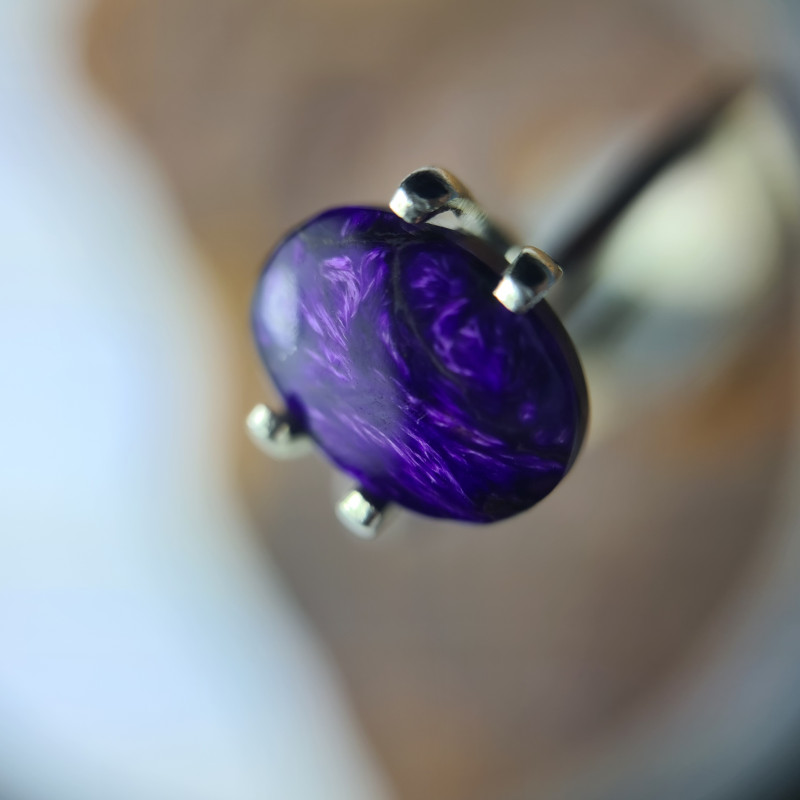 上の写真:スギライト
上の写真:スギライト
人気の半貴石(MZ)
もっと食べたいですか?もしかしたら、これらのファンのお気に入りが気に入るかもしれません:
マラカイト:複数の緑色の色合いの同心円模様を持つ不透明な炭酸銅
モアッサナイト:隕石のクレーターで自然に発見された、透明で非常に硬い無色のカーボランダムですが、ほとんどの場合は合成品として販売されています。
ペタライト:希少で透明、無色から淡いピンク色の長石のような宝石
プレナイト:乳白色の半透明と真珠のような光沢を持つ洋ナシグリーンのイノケイ酸塩
ロードクロサイト:炭酸マンガン。半透明、濃いピンク色、または不透明で、ピンク色に白い縞模様がある。
ロードナイト:黒または茶色の内包物を持つ半透明または不透明のピンク色のマンガンシリカ石。ロードクロサイトと間違われることが多い。
セレナイト:精神的な浄化作用で知られる透明な白い石膏結晶。砂漠のバラ、石膏の花、サテンスパーなど、ユニークな原石の品種がある。
スフェーン:透明なチタンを豊富に含むチタン石。通常は鮮やかな黄緑色で、色とりどりの輝きを放つ。
スギライト:不透明で鮮やかなフクシアから紫色の複雑な環状珪酸塩で、通常は黒または白の脈が見られます。
トパーズ:透明で、一般的には青または白のフッ素含有アルミニウムケイ酸塩で、最も価値の高い金色からピンクオレンジのインペリアルトパーズなど、さまざまな色があります。
ターコイズ:不透明な空色から青緑色の微結晶リン酸塩で、黄色、茶色、または黒色の縞模様がある
ジルコン:ダイヤモンドのような光沢と輝きを持つ透明なケイ酸ジルコニウム。あらゆる色がありますが、最も人気があるのは青色です。
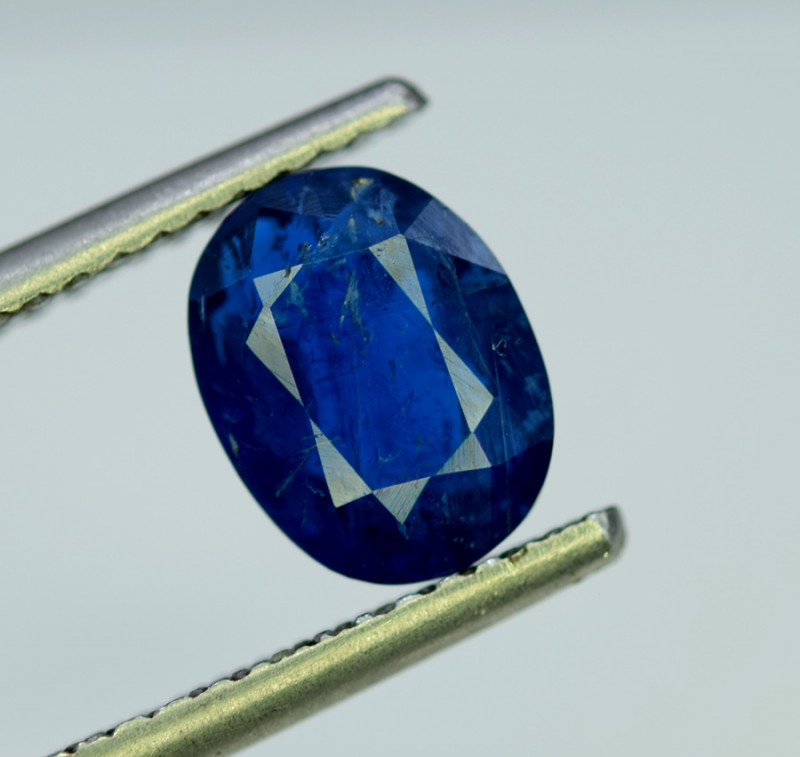 上の写真:アフガナイト
上の写真:アフガナイト
あまり知られていない半貴石
これらの宝石の名前は馴染みがないかもしれませんが、あなたの新しいお気に入りになるかもしれません。
アフガナイト:アフガニスタン産の半透明でコバルト色の長石のような宝石
アラゴナイト:半透明で、通常は白色から灰色で、方解石のような炭酸カルシウム。地質学的または生物学的に軟体動物やサンゴによって形成される。
ジオプターゼ:半透明、濃い緑から青緑色の銅シクロケイ酸塩
ドロマイト:鞍型の結晶を持つ透明な白、ピンク、または黄褐色の炭酸カルシウムマグネシウム
ラズライト:不透明なコバルトブルーから藍色のマグネシウム鉄リン酸
マグネサイト:黒色の脈を持つ透明白色から黄褐色、または不透明白色の炭酸マグネシウム
灰重石:透明で、一般的には青から白のタングステン酸カルシウムで、分散度が高く、ほぼダイヤモンドレベルの光沢がある。
シャッタカイト:不透明でかなり珍しい、鮮やかな青色の銅ケイ酸塩
スミソナイト:半透明で方解石に似た炭酸亜鉛。さまざまな色があるが、ピンク、青、緑が最も人気がある。
タンタライト:コロンバイトと密接な関連のあるタンタル鉄酸化物鉱物のグループ
トレモライト:半透明のクリーム色または緑色の角閃石ケイ酸塩。緑色のネフライト翡翠の変種としてよく知られていますが、ほとんどの場合、他の宝石の内包物として見つかります。
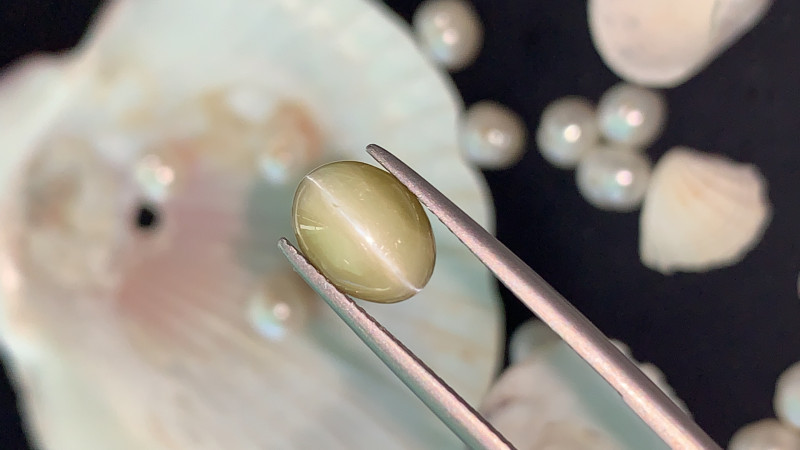 上の写真:キャッツアイクリソベリル(別名シモファン)
上の写真:キャッツアイクリソベリル(別名シモファン)
独特の輝きを持つ宝石
多くの宝石は輝きこそすべてであり、その輝きは光によって決まります。次は、他に類を見ないほど光と踊る美しい宝石について学びましょう。
驚異的な半貴石
驚異的な宝石は光と独特な相互作用をし、魅惑的な光学現象を呈示します。これらの半貴石には以下が含まれます。
ブラックスターダイオプサイド:4条または6条のアステリズムを持つ緑がかった黒色のダイオプサイド
クリソベリル:透明な酸化アルミニウムベリリウム宝石のグループ、または単色の黄緑色の宝石(リストにない変種:シャトヤンシー・シモフェン(別名キャッツアイ)とミント色のバナジウム)
ダイアスポア:透明、緑、ピンク、シャンパン色と色が変わる宝石。トルコ産の場合はズルタナイトまたはチャリテとも呼ばれる。
エンスタタイト:半透明のオリーブグリーンのマグネシウムを豊富に含む輝石で、星状模様が見られることもある。
コルネルピン:稀少な透明なマグネシウムアルミニウムホウケイ酸塩。通常は茶色、濃い緑色、または黄色で、アステリズムやシャトヤンシー効果を示すことがある。
ペッツォッタイト:セシウムを含み、キャッツアイ効果とアステリズムが見られる透明なラズベリーレッドまたはピンクのベリルのような石(もはやベリルの変種とはみなされていない)
シリマナイト: 銀色のキャッツアイ効果を持つ不透明な暗赤褐色から黒色の繊維状の宝石、または半透明でガラス質の白から薄緑色の結晶
ウレキサイト:絹のような半透明の白いネソボレートで、その下の映像を表面に映し出す能力とシャトヤンシー効果から「テレビ石」と呼ばれています。
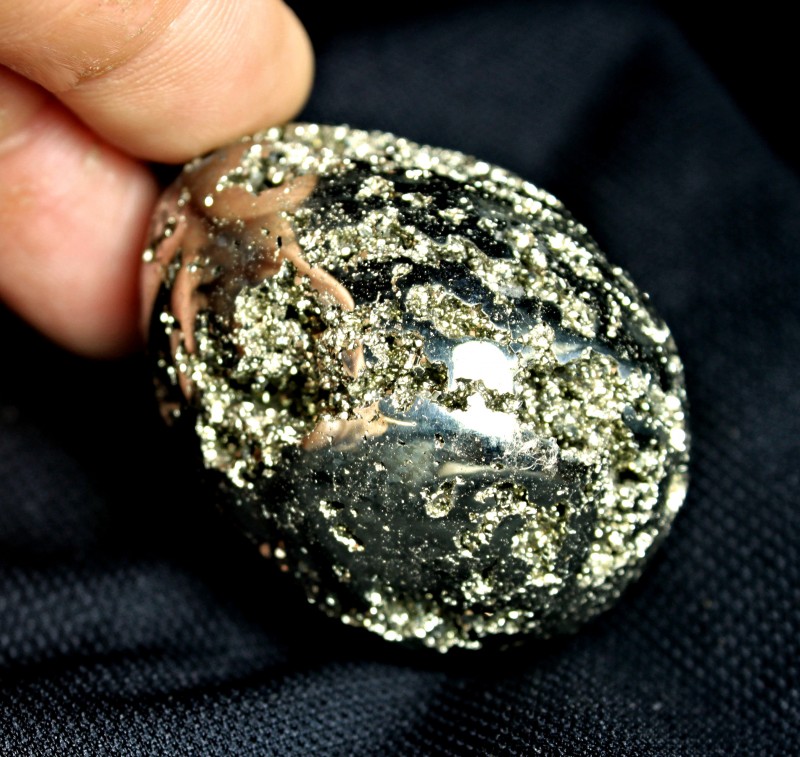 上の写真:黄鉄鉱
上の写真:黄鉄鉱
金属半貴石
スタイリッシュだけど、よりナチュラルな輝きをお探しですか?こちらのメタリックな宝石をチェックしてみてください。
ブロンズ石:緑褐色で繊維状、鉄を含むエンスタタイト変種。青銅色の金属光沢を持ち、6条のアステリズムを示すこともある。
ブルッカイト:半透明または不透明、典型的には茶色、金属分の少ない二酸化チタン
錫石:ダイヤモンドのような光沢と強い分散性を持つ、稀に無色透明の錫酸化物宝石
クプライト:透明でやや金属的な赤色の酸化銅
ヘマタイト:不透明で金属的な灰色から錆びた赤色の酸化鉄の宝石で、赤い粉の縞模様がある。
磁鉄鉱:不透明で金属的な、濃い灰色または茶色の磁性を持つ酸化鉄鉱物(非記載種類:天然磁石)
白鉄鉱:黄鉄鉱に似た不透明な金属硫化鉄で、淡い青銅色の色合いと虹色の表面腐食を呈する。
黄鉄鉱:「愚者の金」と呼ばれる不透明な金属黄銅色の硫化鉄
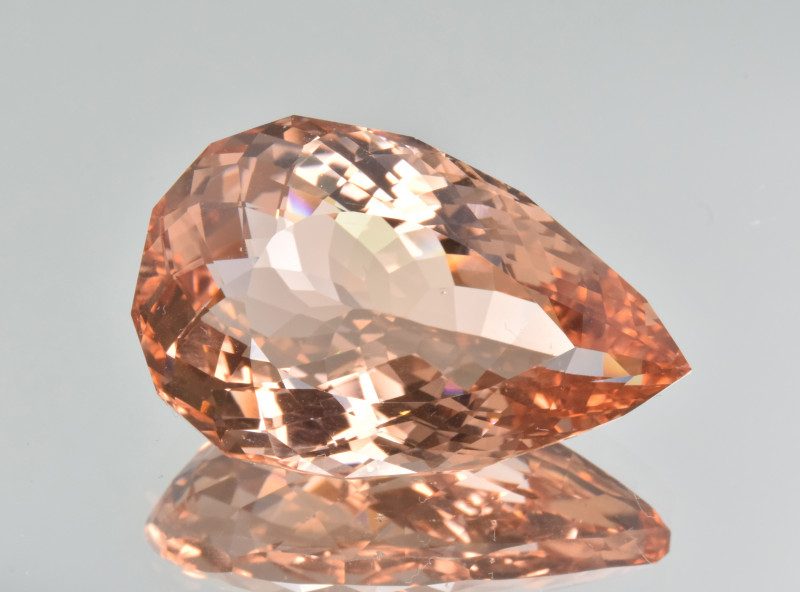 上の写真:モルガナイト
上の写真:モルガナイト
ファミリー別宝石
有名な宝石の系統は、宝石の識別を容易にするだけでなく、宝石選びも容易にします。以下の様々な石のカテゴリーから、お気に入りを絞り込んでください。
半貴石ベリル宝石
超越的なエメラルドのほかに、残りの緑柱石は半貴石です。
緑柱石:透明から半透明のベリリウムアルミニウムケイ酸塩のグループ(リストにない変種:無色のゴシェナイト)
アクアマリン:透明、淡い青から海緑色の緑柱石
ヘリオドール:透明、黄色から金色の緑柱石
モルガナイト:透明、淡いピンクからピーチ色のベリル
 上の写真:ツァボライトガーネット
上の写真:ツァボライトガーネット
半貴石ガーネット
ガーネットは貴重な宝石と間違われることが多いですが、半貴石だからといって美しさが損なわれるわけではありません!いくつか注目すべき宝石をご紹介します。
ガーネット:主に赤または緑の複雑なケイ酸塩のグループ。主な5種は、パイロープ、グロッシュラー、アルマンディン、スペサルタイト、アンドラダイトです。
デマントイド:最も希少なガーネットの中でも、透明で鮮やかな黄緑色から濃いオリーブ色のアンドラダイト
ツァボライト:透明な森の緑からエメラルドグリーンのグロッシュラーガーネット。最も希少で価値の高いガーネットの一つ。
 上の写真:クンツァイト
上の写真:クンツァイト
半貴石スポジュメン
スポジュメン宝石はあまり知られていないかもしれませんが、どれももう一度見る価値があります。
スポジュメン:多くの場合、大きくて繊細なリチウムアルミニウムケイ酸塩のグループ、またはオレンジ、灰色、茶色などの単色または2色の色合いを持つ透明な宝石(変種の色は除く)
ヒデナイト:透明な緑色のスポジュメンであり、最も希少なスポジュメンの変種
クンツァイト:透明で、ピンクから紫色。日光にさらされると色が薄くなります。
トリファン:無色透明から黄色のスポジュメン
 上の写真:ムーンストーン
上の写真:ムーンストーン
半貴石長石
地球の地殻で最も一般的な鉱物である長石は、多様性に富み、その存在は豊富です。つまり、より多様な、美しい宝石が生まれるということです。
長石:カルシウム、カリウム、またはナトリウムを含む、典型的にはガラス状で白色のアルミニウムケイ酸塩の広範なグループ。斜長石(アルバイト、アノーサイト)とアルカリ(正長石、サニディン、マイクロクライン、アノーソクレース)の2つの主要なサブグループに分かれています。
アマゾナイト:不透明、緑から青緑色のカリウム長石(マイクロクリン)変種
.gemrockauctions.com/learn/az-of-gemstones/andesine-feldspar">アンデシン長石:半透明でピンクからオレンジ色の斜長石。赤から緑の色の変化や虹彩の輝きがある場合があります。
ラブラドライト:半透明で、青から灰色の斜長石で、ラブラドレッセンス(内部虹彩の一種)を呈する。
ムーンストーン:青白色のアデュラレッセンス(内部の輝き)を持つ、半透明の白色の正長石と乏長石の混合物
オレゴンサンストーン:オレゴン産の透明な銅含有長石。一般的には淡黄色からピンク色で、実際にはラブラドライトの一種です。
正長石:無色透明から淡いシャンパンイエローの長石宝石
レインボーラティスサンストーン:虹色の格子模様、アベンチュレッセンス、アデュラレッセンスを持つ、極めて珍しい多色の正長石
スペクトロライト:フィンランド産の、フルスペクトルのラブラドレッセンスを持つ、希少な不透明ラブラドライトの変種
サンストーン:半透明でピンクからオレンジ色の斜長石。通常、オレンジ色と金属的に輝くアベンチュレッセンスが見られます。
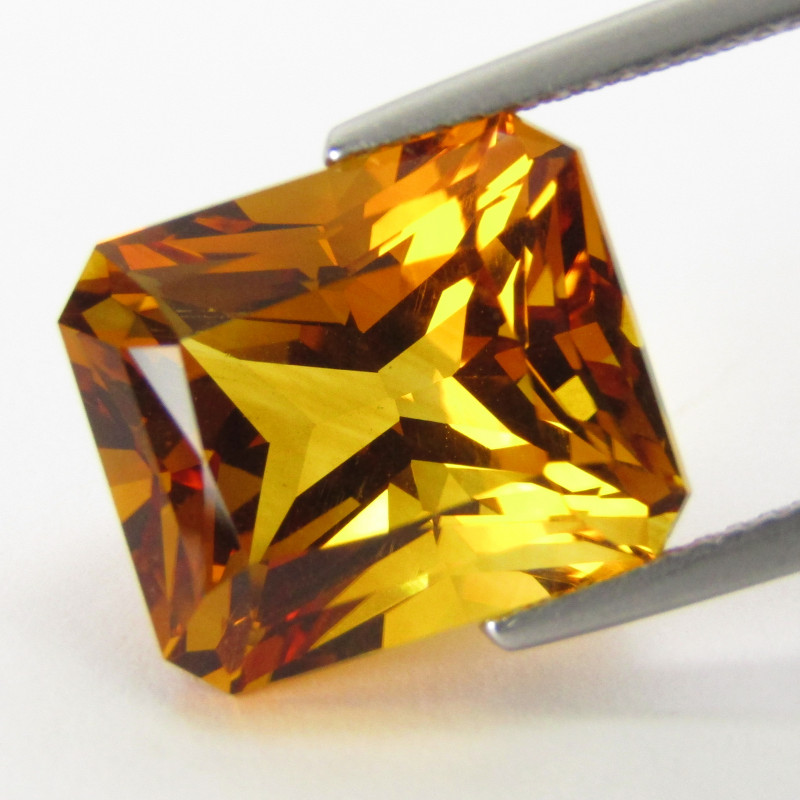 上の写真:シトリン
上の写真:シトリン
半貴石クォーツ
クォーツ宝石はおそらく最もよく知られている結晶であり、 クォーツの主な種類は次のとおりです。
クォーツ:透明から半透明のマクロ結晶シリカ石または「ロッククリスタル」とも呼ばれる無色の単結晶宝石(リストにない種類:タンジェリンクォーツ、レモンクォーツ、ブルークォーツ、ハーキマーダイヤモンド)
アメジスト:透明なラベンダーからマゼンタのクォーツ(淡い品種:ローズ・ド・フランス・アメジスト)
アメトリン:シトリンとアメジストの半透明の黄色と紫色の混合物
シトリン:透明な黄色から茶色のクォーツ(赤みがかったオレンジ色の変種:マデイラシトリン)
ドゥルージー:通常はジオードの中にある、輝く小さな結晶の層を持つ結晶集合体の一種、またはこの層を持つクォーツの短縮形。
ミスティッククォーツ:虹色の輝きを放つ金属蒸気表面コーティングを施した天然の透明クォーツ
プラシオライト:アメジストを熱処理することで作られることが多い半透明の薄緑色の石英
ローズクォーツ:バレエピンクからローズレッドのクォーツで、かすんだ半透明で、アステリズムが見られる
スモーキークォーツ:自然放射線とアルミニウムによる茶色から黒色の「煙」が内部にある半透明の透明なクォーツの変種。
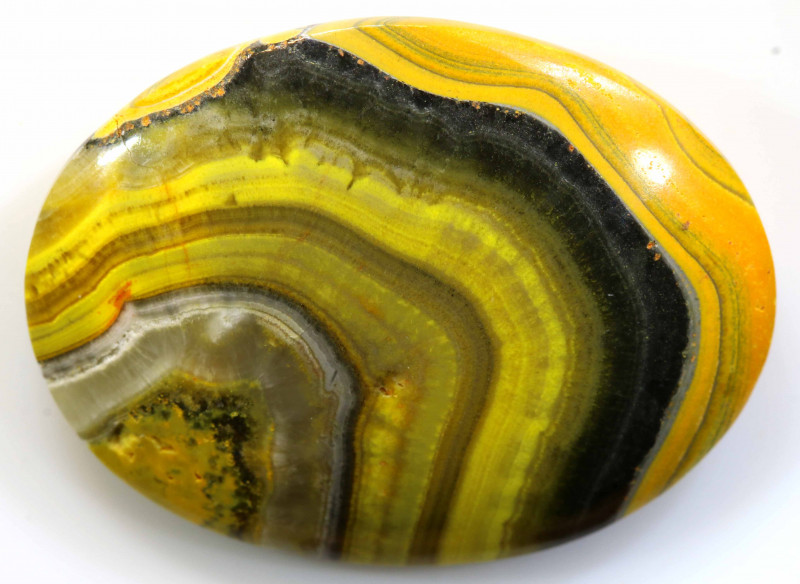 上の写真:バンブリージャスパー
上の写真:バンブリージャスパー
半貴石カルセドニー
微結晶石英、またはカルセドニーには、さらに多くのオプションがあります。
カルセドニー:微結晶質石英のグループ、または単結晶の半透明で淡白から灰青色の宝石
アゲート:半透明で色の縞模様があるカルセドニーの一種(記載されていない変種:樹枝状アゲート、苔状アゲート、ブルーレースアゲート)
アクアプレーズ:2013年にアフリカで発見されたニッケルとクロムを含む半透明で鮮やかな青緑色のカルセドニーの変種
ブラッドストーン(ヘリオトロープ) :不透明で濃い緑色の玉髄に赤い斑点がある
カーネリアン:半透明で、黄色から赤色の単色または多色の模様のカルセドニー
クリソコラカルセドニー(宝石シリカ) :最も価値の高いカルセドニー。半透明で明るい青から青緑色の、クリソコラを内包するカルセドニー。
クリソプレーズ:ニッケルを含む半透明のアップルグリーンカルセドニー
ファイアーアゲート:半透明で虹色に輝くアゲート。茶色のベースに赤、オレンジ、緑、青の輝きがある。
ジャスパー:不透明で、色の縞模様や模様のある玉髄の宝石の一種
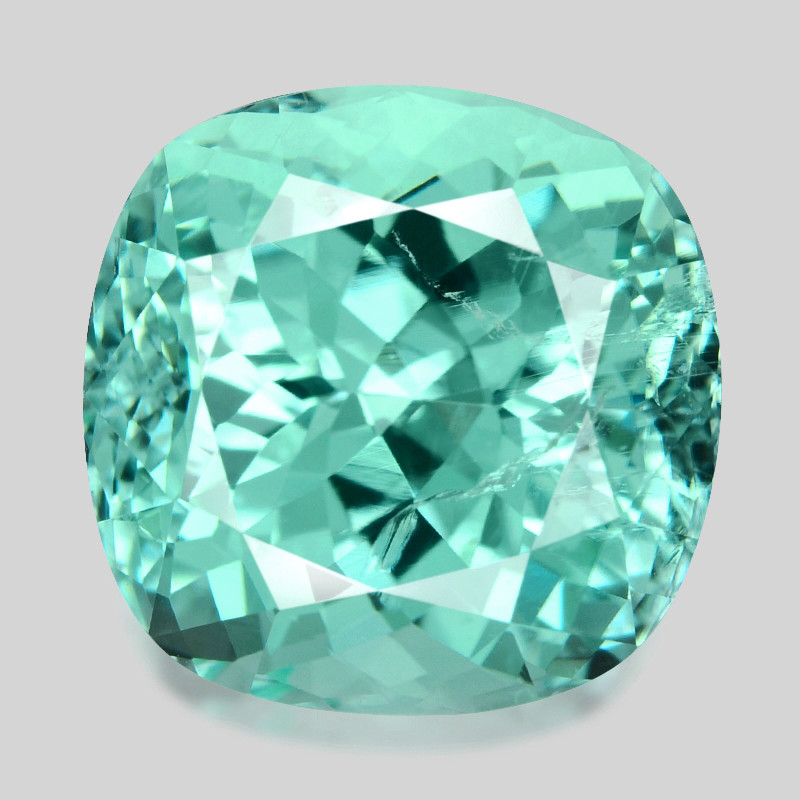 上の写真:パライバトルマリン
上の写真:パライバトルマリン
その他の半貴石ファミリー
小規模ながらも重要な宝石ファミリーには次のものがあります。
方解石:炭酸カルシウムの集合体、または透明なオレンジ色の宝石
コバルト方解石:コバルトから生まれた、鮮やかなピンクから栗色をした希少な半透明の方解石
緑泥石:雲母を多く含む層状珪酸塩のグループ。主なサブグループ:クリノクロアとシャモサイト(リストにない変種:アメーサイト、クックアイト)
セラフィナイト:森林緑色の模様があるクリノクロア緑泥石の変種で、薄緑色から銀色の羽毛状雲母の包有物があり、不透明部分と半透明部分がある。
雲母:柔らかく、薄いシート状に剥がれることで知られる層状珪酸塩の大きなグループ。主なグループ分けは、黒雲母、白雲母、リチウム雲母(リストにない種類:黄色からオレンジ色の金雲母、黒色の黒雲母)
レピドライト:不透明で、通常は灰紫色の雲母で、白い石英の模様があり、時には緑色のトルマリンの斑点がある。
スカポライト:アルミノケイ酸塩鉱物系列または単数形で、一般的には蜂蜜色で透明な宝石(記載されていない変種:レインボー スカポライト、ペチライト、ナッタライト、ウェルネライト、メイオナイト、マリアライト)
蛇紋石:カオリナイト蛇紋石鉱物のサブグループ、または明るい緑色と暗い緑色の模様を示すことが多い茶色がかった緑色の宝石
ソーダライト:ナトリウムを豊富に含む長石のような宝石のグループ、または不透明なロイヤルブルーと白のまだら模様の独立した石(リストにない変種:アウイネ)
スピネル:複雑で多様な組成を持つ硬質鉱物のグループ、またはルビーレッドからピンク色で最も人気の高い単色の透明な宝石
トルマリン:ケイ酸塩の複雑なグループ、またはグループ内の単一の宝石。最も一般的なのは黒トルマリン(ショール)です。
ルベライト:半透明、濃いピンク、赤、またはマゼンタ色のトルマリン
インディコライト:透明から不透明、青から青緑のトルマリン
ウォーターメロントルマリン:透明から不透明、ピンク、緑、時には白の層を持つ2色のトルマリン
クロムトルマリン:透明から不透明の緑色のドラバイトトルマリン
バリサイト:アルミニウムリン酸塩のグループまたは、通常は黒または白の模様がある不透明な緑からトルコ石の単独の宝石(リストにない変種:スコロダイト、マンスフィールド石)
ゾイサイト:通常は透明で、単色または多色の宝石ファミリー。主な種類はタンザナイト、アニョライト(ルビーゾイサイト)、チューライトの3つ。
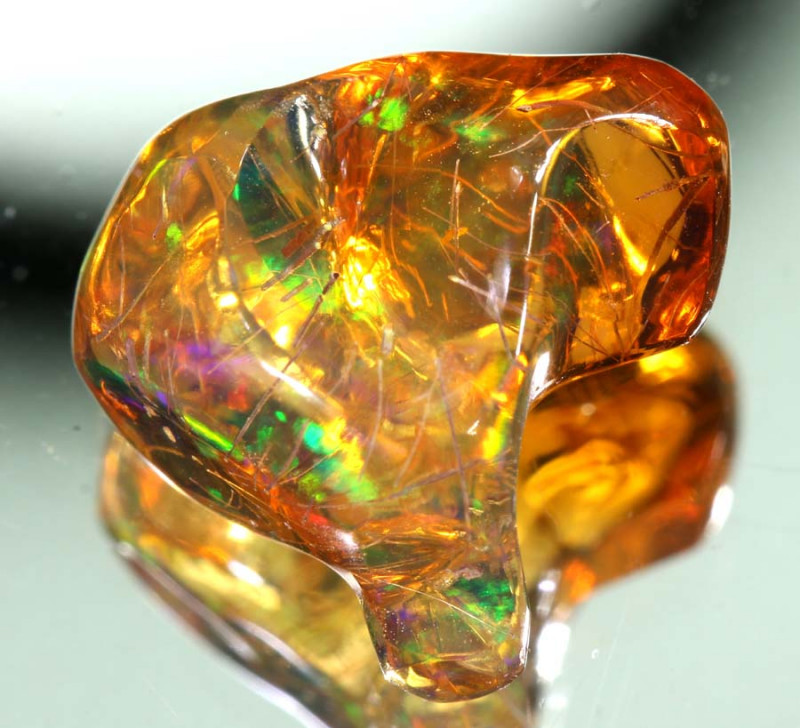 上の写真:メキシコ産ファイアーオパール
上の写真:メキシコ産ファイアーオパール
非鉱物宝石
次のカテゴリーでは、日常的なクリスタルではないユニークな宝石を取り上げます。
半貴石鉱物(無機)
ほとんどの宝石は鉱物の結晶ですが、鉱物質は異なります。以下に、半貴石鉱物質(有機物ではない)を挙げます。
メキシカンファイアオパール:独特の透明感とファセット加工が特徴のオパール。赤から黄色の色合いで、遊色効果も見られる。
黒曜石: 不透明で、通常は黒色で、時には模様のある、含水シリカガラス流紋岩(リストにない変種: アパッチの涙、レインボー黒曜石、ファイアー黒曜石、スノーフレーク黒曜石、マホガニー黒曜石、シーン黒曜石)
テクタイト:不透明で、暗い色をしていることが多く、光沢のある天然ガラス。組成は様々で、種類も豊富。隕石の衝突によって形成されたもの。
 上の写真:カナダ産アンモライト
上の写真:カナダ産アンモライト
半貴石有機宝石
有機宝石は地質学的に形成されるものではありません。これらの半貴石は、植物や動物の力によって形成されます。
琥珀:半透明で、典型的には赤橙色、古代の松の木から得られた硬化した樹脂
アンモライト:絶滅したアンモナイトの不透明な化石化したアラゴナイトの殻で、多色の虹彩を呈している。
サンゴ:伝統的にピンクから赤の宝石で、サンゴの海洋生物の外骨格で構成されています。
化石:化石化した生物または植物材料(例:サメの歯、象牙、恐竜の骨、竹、サンゴ)。特徴的な模様があり、多くの場合、鉱物が詰まっています。
象牙:大型哺乳類の白からクリーム色の牙または歯で、主に象牙質で構成されている
ジェット:不透明な黒から茶色の褐炭有機鉱物。通常は水中で化石化した腐朽木から形成される。
真珠:一般的には、侵入する刺激物から身を守るためにカキが作り出すクリーム色の真珠層(リストにない種類: タヒチ真珠、ゴールデンパール、コンクパール、ケシパール、アコヤ真珠、南洋真珠)
化石化したヤシ:褐色から金色で斑点のある、パルモキシロンと呼ばれる絶滅したヤシの化石。
珪化木:化石化した植物質の一種で、シリカの充填や置換によって耐久性が高められ、黄褐色から赤色の模様が現れることが多い。
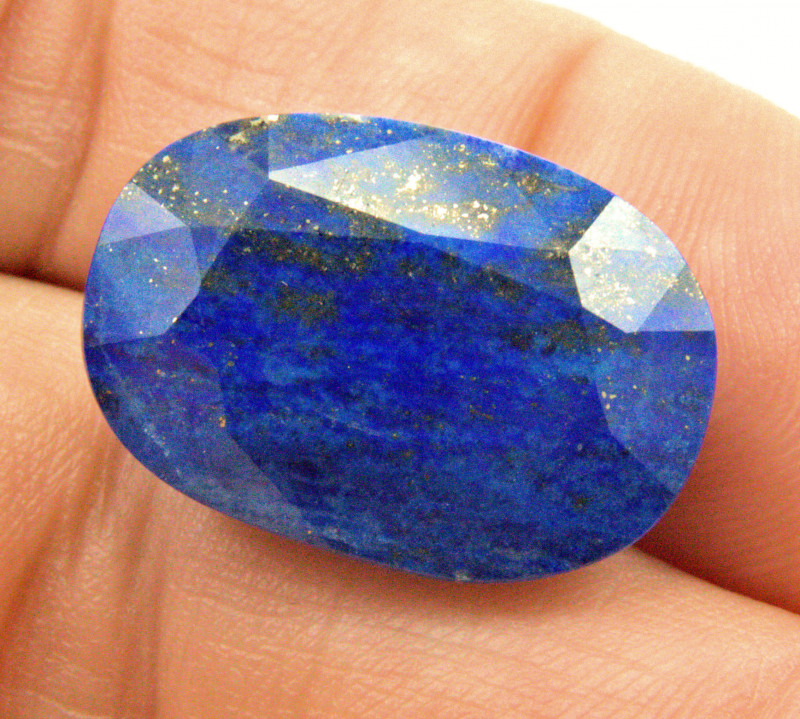 上の写真:ラピスラズリ
上の写真:ラピスラズリ
半貴石宝石(AM)
多くの宝石は2つ以上の鉱物を含んでおり、岩石として分類されます。以下に、そのような貴重な岩石や石をいくつかご紹介します。
アベンチュリン:半透明から不透明の石英と長石の岩石で、緑色の多様性と金属的な輝き( アベンチュレッセンス)で知られています。
書道石:ヘマタイトと様々な化石物質から構成されるユニークな黄金色の岩石で、赤、緑、茶色の書道のような模様を作り出します。
チャロアイト:主に鉱物チャロアイトからなる、半透明で乳白色の紫と白の渦巻き模様の岩石
菊花石:先史時代の地層から得られた、白い結晶(天青石、長石、紅柱石、または方解石)の「菊」模様を持つ不透明で暗い岩石
ホークアイ:不透明な濃い青緑色または青灰色の玉髄岩石で、単純なシャトヤンシー(反射光の複数の光線)と縞模様を引き起こす繊維状のクロシドライト包有物が含まれています。
ラピスラズリ:不透明な藍色の岩石で、25~40%がラズライト、金色の黄鉄鉱、白い方解石の斑点がある。
溶岩:冷えたマグマから形成された鉱物または岩石のグループ(流紋岩、安山岩、珪長岩など)、または宝石として使用される単一の玄武岩または塩基性岩
隕石:不透明で滑らか、またはくぼんだ、茶色から黒色の地球に落下した宇宙の石
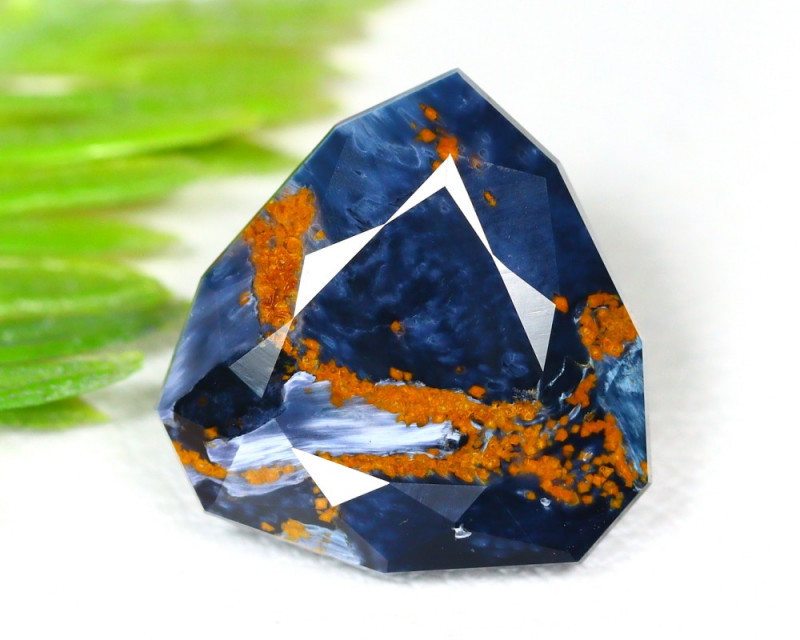 上の写真:ピーターサイト
上の写真:ピーターサイト
半貴石宝石(PZ)
もっと楽しみたいですか?他の人たちと一緒にロックンロールを楽しみましょう。
ピーターサイト:玉髄で固められた鷹の目と虎の目からなる不透明な多色の岩石。典型的にはオレンジ色または灰青色で、混沌とした模様がある。
流紋岩: 不透明な淡いピンク、白、または灰色の溶岩で、主な変種は黒曜石、凝灰岩、軽石です (リストにない変種: レインフォレスト ジャスパー、アパッチ セージ、ワンダーストーン、サンダーエッグ)
ルビーゾイサイト(アニオライト) :ピンクレッドのルビーとグリーンのゾイサイトから成り、多くの場合、黒色のパーガサイト脈を持つ不透明な多色の岩石(ゾイサイト変種として販売されています)
セプタリアン:茶色のアラゴナイト、黄色の方解石、灰色の石灰岩からなる不透明な岩石
シヴァ・リンガム:ヒンズー教で神聖な、不透明な玉髄の岩石で、鉄酸化物と様々な鉱物を含み、通常は黄褐色、栗色、灰色の部分を形成します。
スーパーセブン:アメジスト、クリアクォーツ、スモーキークォーツ、カコクセナイト、ゲーサイト、ルチル、レピドクロサイトを含む神聖な半透明の多色の岩石
ティファニーストーン:蛍石、オパール、ベルトランダイト(およびその他の鉱物)からなる半透明の部分を持つ不透明な岩石で、主に紫、白、黒の色合いが混ざった渦巻き模様が見られます。
タイガーアイ:ホークスアイのような不透明なカルセドニーの岩石ですが、酸化鉄による金黄色から赤褐色で、単純なシャトヤンシーと縞模様があります。
タイガーアイアン:金褐色のタイガーアイ、黒色のヘマタイト、赤いジャスパーを含む不透明な岩石
トルキエナイト:トルコ産の不透明なライラック色からブドウ色の岩石(通常は白い斑点がある)。主に紫色の翡翠だが、石英、正長石、その他の鉱物も含まれる。
ヴァーダイト:南アフリカ産の柔らかく不透明な緑色の岩石で、主にフクサイトで構成され、通常は黄色と茶色の模様があります。
ゼブラロック:オーストラリア産の不透明な白と赤褐色の縞模様の岩石で、主に玉髄と絹雲母、その他の鉱物で構成されています。
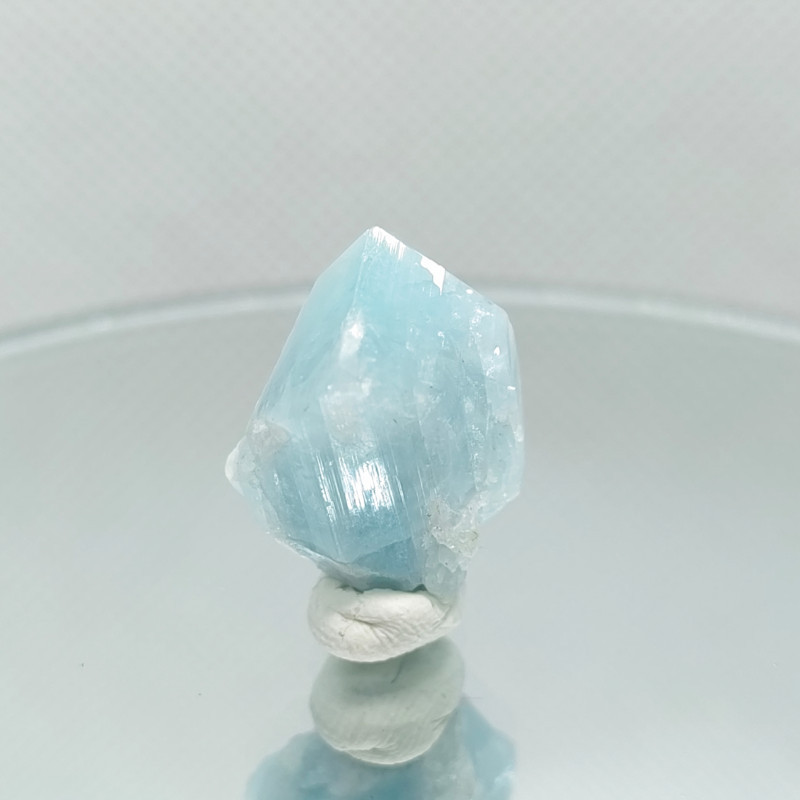 上の写真:ユークレース
上の写真:ユークレース
希少な半貴石
最後に、コレクターの楽しみである希少価値の高い石をご紹介します。
希少な半貴石
これらは最も希少な半貴石ではありませんが (それらは次に挙げます)、以下の宝石は希少な宝石の長いリストに含まれています。
アキシナイト:半透明のカルシウムアルミニウムホウ酸塩で、通常は金褐色で強い多色性がある。
バストネサイト:スウェーデンで発見された、希土類元素を含む半透明の茶色がかった炭酸塩
カバンサイト:半透明から不透明な紺碧のケイ酸カルシウムバナジウム
辰砂:鮮やかな赤色から深紅色の、繊細で半透明または不透明な硫化水銀。結晶形では稀。
クロコイト:柔らかく半透明のサフランレッドから赤オレンジ色の鉛クロム酸塩結晶
ユークレース:半透明のベリリウムケイ酸塩で、通常はベビーブルーから無色だが、時には2色で、
ロンドナイト:半透明の乳白色または透明な黄色の非常に珍しいセシウムに富むホウ酸塩
ベスビアナイト(イドクレース) :ベスビオ山で発見された透明で、典型的には黄緑色のカルシウムアルミニウムケイ酸塩(リストにない変種:シプリン、カリフォルナイト、ザンサイト、ウィルアイト)
亜鉛鉱:ニュージャージー州産の半透明のオレンジ色または赤色の酸化亜鉛。天然では非常に稀なので、合成で作られることが多い。
 上の写真:アレキサンドライト
上の写真:アレキサンドライト
最も希少な半貴石
2005年時点で、パイナイトは最も希少な宝石鉱物としてギネス世界記録に認定されていましたが、その後も1,000種類近くのパイナイトが発見されています。現在最も希少な半貴石は以下の通りです(アルファベット順)。
ブラックオパール:オーストラリア産のオパールの中でも特に濃い色調と遊色効果を持つ品種として有名です。
ベニトアイト:カリフォルニア州の透明なサファイアブルーの宝石
グランディディエライト:半透明のシアン色のマグネシウムアルミニウムホウケイ酸塩で、ファセット加工できるほどの大きさになることはほとんどありません。
翡翠: ジェダイトまたはネフライトの用語。組成と特性が異なる 2 つのケイ酸塩で、最も一般的なのは緑色ですが、紫、白、オレンジ、黒などの色もあります (ジェダイトは最も希少で、最も価値があります)。
ジェレメジェバイト:透明、通常は青から紫色のアルミニウムホウ酸塩
ラリマー:ドミニカ共和国産の青緑色と白の模様のペクトライト品種
マスグラバイト:透明な灰緑色から紫色のベリリウム酸化物。ターフェアイト変種よりも希少。
ペイン石:ミャンマー産のみの、ジルコニウムとホウ素を含む、非常に希少な透明な赤から茶色のホウ酸塩
パライバトルマリン:非常に希少な半透明で、明るい青から緑のトルマリン。ブラジル産のみ公式に認められています。
プードレッタイト:カナダ産の透明なピンク、紫、または無色の環状珪酸塩鉱物
レッドベリル:透明から半透明、深紅からオレンジ色のベリル品種
ターフェイトong> : 透明、通常は藤色、マスグラバイト
タンザナイト:半透明、青から紫(最も価値が高い)のゾイサイト変種。タンザニア産のみ

あなたにとって大切な宝石は何ですか?
結局のところ、貴石と半貴石の分類は宝石を購入する際に役立ちますが、決定的な要素ではありません。貴重なダイヤモンドやエメラルドで身を飾るにしても、同等に美しい半貴石で身を飾るにしても、宝石の真の価値は、それがあなたにどのような気分を与えるかにかかっています。
あなたの直感に従って、あなたにぴったりの宝石を見つけてください。
Gemstone Encyclopedia検索
最新記事
鮮やかな赤い模様と文化的意義で珍重される希少な宝石、チキンブラッドストーンの歴史、特性、価値、お手入れのヒントをご紹介します。
8th Dec 2025
ゲイラス石は、乾燥しやすいため白濁しやすい希少鉱物で、主に工業用途で使用されています。この完全ガイドで、ゲイラス石の歴史、特性、用途、そして特徴をご覧ください。
7th Dec 2025
チオライトは、氷晶石に似た、無色から白色の希少鉱物です。宝石としては非常に希少で、限られた産地からしか産出されません。チオライトの用途、歴史、価格、特徴についてはこちらをご覧ください。
5th Dec 2025
記事のカテゴリ
How To's is where you will find helpful articles from gem Rock Auctions on how to cut gemstones, select gemstones and buy gemstones.
9記事数
